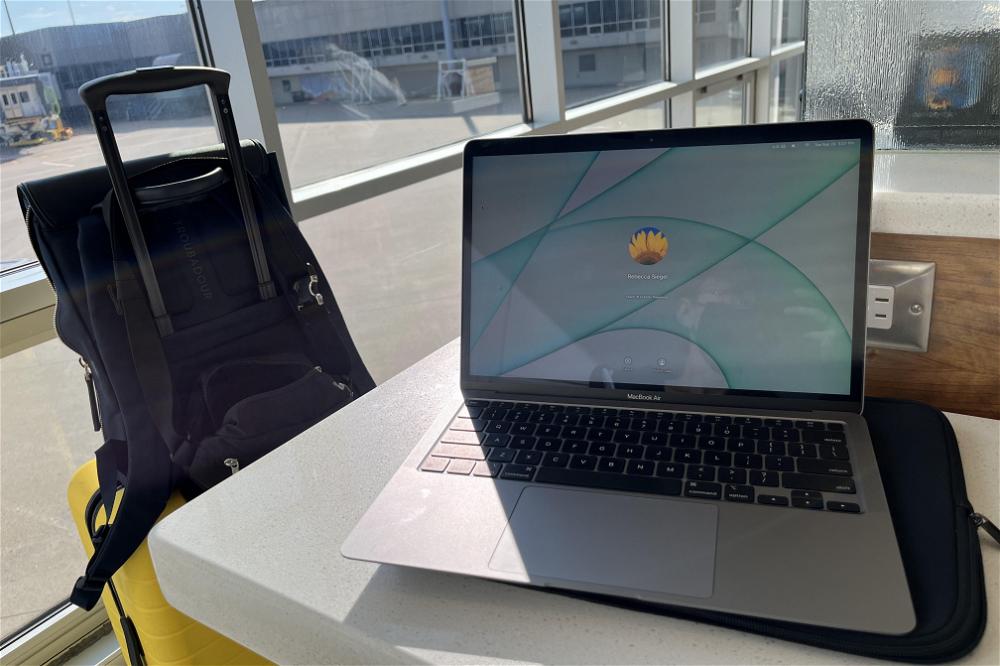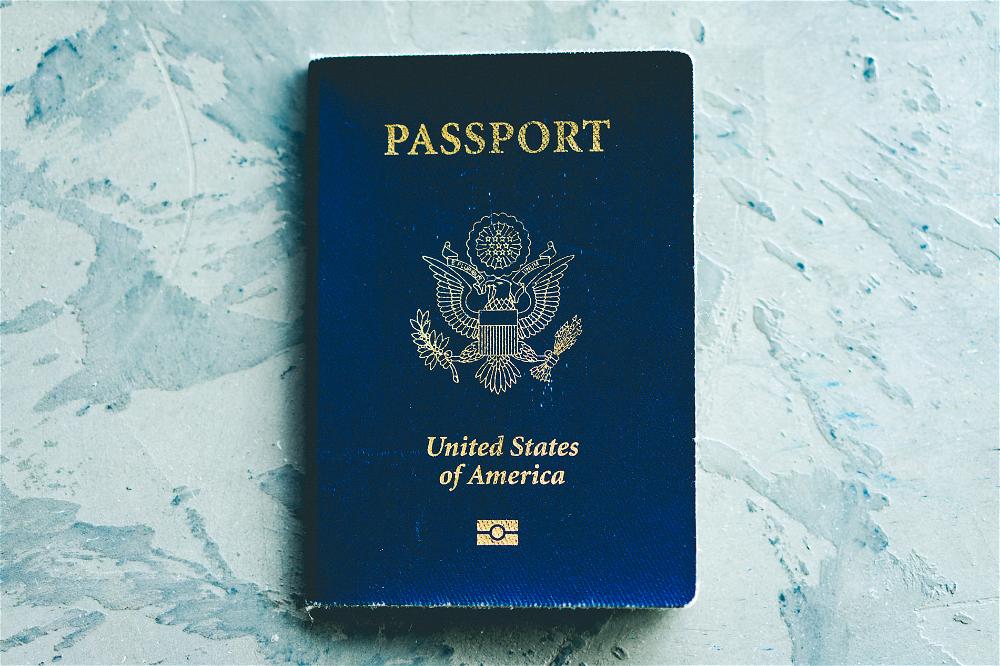Google Fi for Long-Term Travel: Will It Work for Me?

For traveling long-term, is Google Fi the best option for a phone plan? See why Google Fi is our choice for international cell service, calls, texts, data and tethering, in this guide.
This article may contain affiliate links. We earn a small commission when you purchase via those links — at no extra cost to you. It's only us (Becca & Dan) working on this website, so we value your support! Read our privacy policy and learn more about us.
Table of contents
- Is Google Fi good for long-term travel?
- What is Google Fi, and what are the differences between traditional US-based phone carriers?
- Which phones work the best with Google Fi?
- Can I use an iPhone with Google Fi?
- What are the Google Fi plans?
- What are some of the features of Google Fi?
- When does it make sense to get Google Fi?
- When does it not make sense to get Google Fi?
- Is there a data limit for Google Fi?
- Can I tether with Google Fi?
- Does Google Fi offer WiFi calling?
- What are the best features of Google Fi?
- How can I sign up for Google Fi?
Google Fi is a great option for travelers because you won’t be lost trying to find a local SIM card when you arrive in a new country. I originally subscribed to Google Fi in 2016, and it was great for my needs. I’ll get into more of that below, but let’s quickly jump into why you’re here, reading about Google Fi as your phone plan for traveling.
Is Google Fi good for long-term travel?
The answer depends on how long you’re traveling for, and where you frequently visit. Here’s a quick generalization below.
Don’t get Google Fi for long-term travel if…
- If you travel internationally and do NOT come back to the US every few months or so.
- If you travel to destinations that are NOT within this list.
- If you’re on a very tight budget.
Get Google Fi for long-term travel if…
- If you take frequent international trips, but you have a “home base” in the US.
- If you want a flexible phone service.
- If you have a Gmail account.
What is Google Fi, and what are the differences between traditional US-based phone carriers?
You may or may not have already heard of Google Fi. Well, if you’re reading this, you’re a little familiar with it already.
In the US, we have traditional carriers like AT&T, Verizon, T-Mobile and a few others. Each carrier has its own benefits. Some geographic areas, especially more rural areas in the US, are better suited for a specific carrier because of the coverage.
More recently, some carriers may offer better 5G support in your area.
Whatever the case, Google Fi exists and more or less “piggy-backs” off of T-Mobile and US cellular networks. Being a carrier of its own, Google Fi offers lots of different features and plan options. My favorite feature, which is why we list Google Fi in our list of best travel services and apps is: international coverage for 200+ countries.
Always make sure to check the coverage list to see if your travel destination is included. It’s the reason why we wrote this short post on if Google Fi works in Vietnam, as one of many places we’ve been where we’ve used the service.
Which phones work the best with Google Fi?
Because Google is Google, the best phones for Fi are going to be phones that Google makes or has first party partnerships with.
Google Pixel phones are going to be the phones that Google will recommend. Google Pixels are also going to be phones that receive the newest network updates and features of Fi.
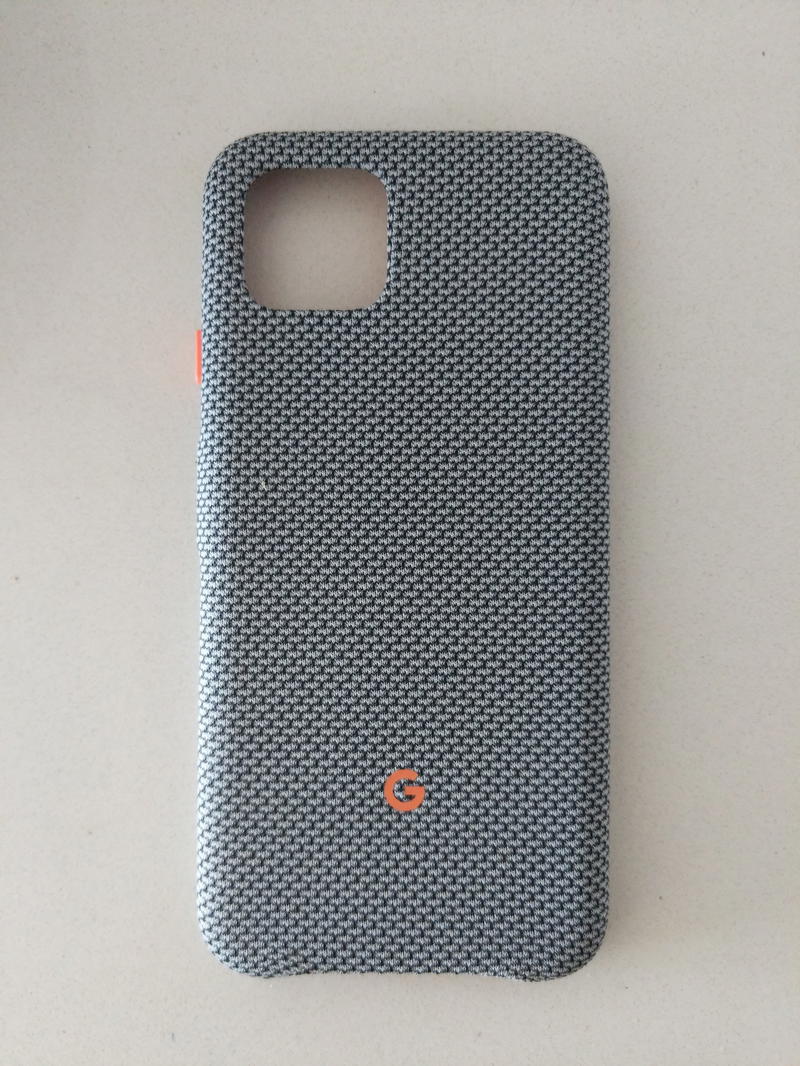
For example, network-switching and 5G coverage are not supported on iPhones. Other features like WiFi calling some message formats need additional setting changes to work properly on an iPhone.
This is important because if WiFi calling isn’t supported, you’ll always have to pay to make international calls.
All of the features within Google Fi work natively and out-of-the-box with Pixels and other phones designed for Fi.
Check out all phones that are designed for Google Fi. You can also shop directly in the Google store on Amazon.

Can I use an iPhone with Google Fi?
Yes. You can currently use most recent iPhone models with Google Fi.
Like I described above, you may not get 100% of the features with Fi; however, the service and most critical functions will work perfectly. If you have any more specific questions about your compatibility, check out the Google Fi website to learn everything you need to know about Google Fi with other phones.
What are the Google Fi plans?
Google Fi currently has three different plans:
- Flexible (this is what I use)
- Simply Unlimited
- Unlimited Plus
The Flexible plan is bare bones and provides the core offerings from Fi. You don’t get as much data as you would with the other plans. The Simply Unlimited and Unlimited Plus offer different rates for data and for when your “data cap” starts.
The Simply Unlimited does have some restrictions on the international offerings. Check Google Fi’s website to get the most up-to-date information about the Fi plans.
What are some of the features of Google Fi?
Aside from being a phone plan and allowing you to make calls, text, connect to the internet and tether, Google Fi has lots of other features that make it a useful service.
Unlimited data
The Simply Unlimited and Unlimited Plus plans offer unlimited data. The Flexible plan offers data at $10/GB.
Service pause
With any Google Fi plan, you can pause your service when you’re not using it. For me, I pause my service when I am in the US. Because I am still on an AT&T family plan with my family from the early 2000s, Google Fi has been the plan that I use purely for working remotely and traveling.

No contracts or additional fees
Because my use for Google Fi is only for traveling and getting international cell service, it’s great to not be on a contract. When I signed up back in 2016, I was mailed a SIM card (you can do eSIM now) and there weren’t activation fees or anything like that.
If you ever need to leave Google Fi, it’s no problem. Cancel your service and pay for your current usage. That’s it!
Built-in VPN and spam blocking
Google claims this is true, and I respect their pledge for privacy. Spam calls are so annoying and the Google network can only do so much to give you protection.
If you are really privacy-focused, consider getting an additional VPN.
Keep in mind that spam call-blocking will only give you so much protection. If someone has your number, they’ll get through. Only certain types of spam calls will be blocked. Other networks also offer this type of protection, by the way! I have this enabled on my family plan with AT&T.
Plan-switching
One nice feature is you’re able to change your Fi plan really easily. Let’s say that you’re using Google Fi as your primary cell service. At home, you’re almost always on WiFi and the flexible plan makes sense.
But, if you’re going to be traveling and want to ramp up your data usage, you’re able to upgrade to the Unlimited Plus plan for only the time you need it.
When you return from your trip, you can get back on the Flexible plan. You’ll only be charged an additional amount for the days that you were on the most expensive plan.
Google Fi is really transparent about the fees, as well. Verizon charged me for an entire month for internet service because they don’t do partial invoices. I needed to use Verizon for only two days over the billing period and was charged for an entire month (given, this isn’t a cell phone example, but you get the point)!
This won’t happen with Fi.
Additional cloud storage with Google One
If you choose the Unlimited Plus plan, you’ll also get Google One for your Gmail account. Note that if you cancel or switch out of the Unlimited Plus plan, your Google One subscription will be canceled after seven days.
At the time of writing this article, Google One costs $1.99/mo. So, the Unlimited Plus plan is effectively giving you about $2.00 of savings if you were already paying for Google One.
As an aside, after using Google services for almost 10 years, I need some form of Google One or additional Google storage. I archive (rather than delete) all of my emails, and they start to add up over the years.
Use your plan internationally
For the Flexible and Unlimited Plus plans, you get international coverage. In my experience, the coverage works really well. Any time in which I’ve landed in a new travel destination, I turn my phone off of airplane mode and connect almost instantly to local cell coverage through Fi. It can take a minute or two, sometimes.
The real benefit is not needing to change your phone number from country to country. You can also find ease in giving friends and family a the same constant phone number at which to contact you while you’re away.
You won’t need a second phone, so all of your apps work, and you can use your phone normally. This is a huge bonus.
When I use Fi internationally, it’s my second phone, and when I don’t use it for a while, my apps get out of date. I sometimes forget some of the common ways to use Android, also! I use an iPhone and get used to the gestures. When switching back and forth with Android, there may be a learning curve for some people.
I rarely need to make international phone calls, but if you do, it’s typically at 20 cents per minute. WiFi calling is important to make this free. We’ve needed to make local calls to hotels, restaurants, tour bookings or other local services, and this has come in handy.
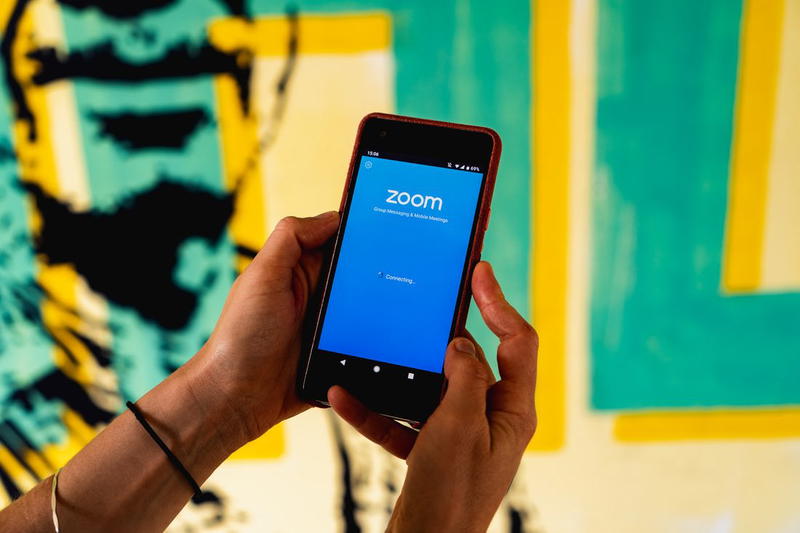
When does it make sense to get Google Fi?
As I covered at the beginning of this article, it makes sense to get Google Fi if you’re based in the US and travel internationally frequently. The international features are the #1 use case in my opinion. The other features above may be a selling point for you.
I wanted to make a point to mention that people who travel long-term might have issues with Fi because you need to be in the US to activate the service. You also need to ping US-based cell towers every few months. If you don’t, Google will likely cancel your service.
The service cancellation has been a common theme that I’ve seen in some digital nomad forums and communities that I belong to. Many folks have been kicked off Google Fi and have had the service deactivated on them with 30 days of notice if they don’t re-enter the US and use Fi from the US every few months.
When does it not make sense to get Google Fi?
Lots of phone carriers have incentives to join their plans. The big phone companies will give great deals for you to get the newest phone. They will also hold you against a contract often times and maybe charge you other fees.
Other carriers may have better discounts and might make it cheaper for you to get cell service. At my last job, AT&T was able to be purchased via an employee portal that would have made it affordable.
With my currently family plan, I don’t pay anything! Similar to most millennials, I’m holding on to my family plan membership stronger than the jaws of life. So is Becca. We think this is common (please feel free to let us know if this is the same for you).
You can’t beat $10 extra per line per month, as long as someone else is paying for the full service.
For other people who are independent (maybe you are a regular adult) and are on their own lines, the base cost could be cheaper picking another carrier.
If most of your travel is to Mexico or Canada, you may not need Google Fi, either. In the last few years, I’ve traveled to Mexico and Canada a few times and was able to use my AT&T phone as is with no problems. There was no additional charge for data or cell usage.
However, and note this: once you wish to use AT&T in a country outside the US that is not Mexico or Canada, the fees are not included in a regular unlimited US data plan, and the default charge could be $10/day. For a 10-day trip somewhere, like to Guatemala, you’d pay $100 for cell coverage alone!
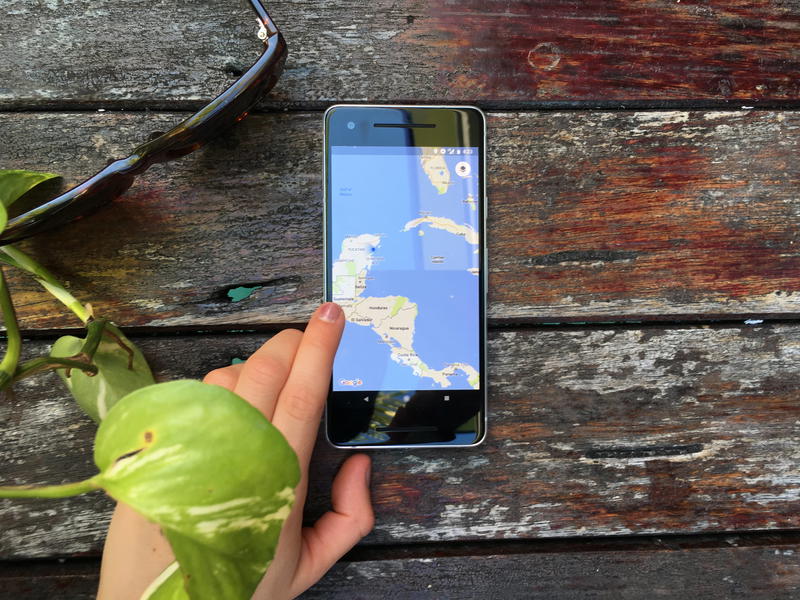
Is there a data limit for Google Fi?
The data limit depends on the plan that you’re using. Luckily, Google Fi has bill protection, so there’s a theoretical limit to how much you’ll pay for data usage.
When I first joined Google Fi back in 2016, it was possible to run up a $1000 bill with data. That won’t happen with the recent addition to bill protection.
The rates and situation might change, so I encourage you to check out Google Fi’s website to learn more about the data limit usage.
Can I tether with Google Fi?
Another form of data is tethering. Not many plans exist that will allow unlimited tethering, or tethering without some sort of speed caps.
Tethering is really useful if you want to work remotely around the world. You can connect to your phone’s network and check emails, send messages or do light internet browsing.
I’m a web developer and I once deployed a website to production, sitting in a cabin in Patagonia, Argentina. I was tethering off of my phone!
Becca and I once tethered (with a local SIM card in Taiwan) because our internet in the Airbnb was too slow. And we were working East Coast hours and nothing else was open. That’s a different story for a different article, though.
The Unlimited Plus plan is the only plan that offers unlimited tethering. Your speeds will eventually slow down, though. The other plans offer tethering either with a hard limit or at the normal cost of data.
During our first trip together as a couple, I was able to tether my Google Fi data so that Becca could use it.
Does Google Fi offer WiFi calling?
Yes. And, because Google Fi charges for international phone calls, this is an important feature. All phones that Google Fi natively supports will support WiFi calling.
Before subscribing to the service, double-check that your phone supports WiFi calling if you plan to make international phone calls. 20 cents per minute can add up rather quickly.
What are the best features of Google Fi?
In my opinion, what keeps me a customer of Google Fi is the ability to pause the service. I would have cancelled it many years ago if I wasn’t able to hold my service when I’m not using it.
I think I’m an edge case, though, so I’ll give a few more highlighted features that I like!
The international phone coverage is the second-best feature, in my opinion. There’s something unique about landing in a foreign country, getting off of the plane and arranging a cab from your phone.
I’ve Googled the current exchange rates right at an arrivals terminal to make sure I wasn’t getting ripped off by a cab company. I’ve also Googled what the best way to get cabs in a country right as I land.
Without Fi and without having phone service right away, you have to rely on the airport Wifi, which may or may not work (sometimes, it requires a local phone number to register and use it). Or, you can try to find a SIM card at the airport. They always feel a little scammy, though, and reminds me of travel in the early 2000s-2010s.
How can I sign up for Google Fi?
You can sign up using this link.
✈️ Did our travel tips help?
We share honest, experience-backed advice to help you with smoother trips. If our suggestions saved you time or stress, treating us to a coffee lets us keep researching the next post.
Fuel more travel adviceYou may also like
-
![A laptop on a table next to a laptop bag.]()
Is TSA PreCheck Worth It? (Yes, and Here’s Why)
Is it worth it to get TSA PreCheck for an upcoming trip? We talk about our personal experience with having TSA PreCheck and why it’s been valuable for our travel.
-
![]()
How to Make the Most Out of Group Travel (And Enjoy a Group Trip)
Group vacations are unique, and planning a group trip can get challenging. Here’s how I’ve come to enjoy group trips and some ways I find that everyone can have fun.
-
![]()
19 Exciting Solo Travel Destinations in 2026 (From Real Travelers)
What are the best ideas for unique solo travel destinations? Check out these popular cities and countries for traveling on your own — some may surprise you.
-
![A glass of black liquid on a wooden table.]()
How to Make Great Coffee While Traveling
Traveling with coffee? You need tips for how to make coffee on the road and on the go. Here’s how to make coffee on a vacation and how to create a coffee travel kit.
-
![A blue passport sitting on a blue surface.]()
How to Know If You Need an International Travel Visa
How do you know if you need a visa to travel to another country? Getting visas can be one of the challenges of international travel. Our how-to guide will show you a few steps to determine if you need a visa for your trip.
-
![]()
Essential Packing Checklist for an International Trip with a Toddler
Ready for an international travel packing list for a toddler? Use this packing checklist for toddler essentials: what to pack, for overseas flights and long trips abroad.
